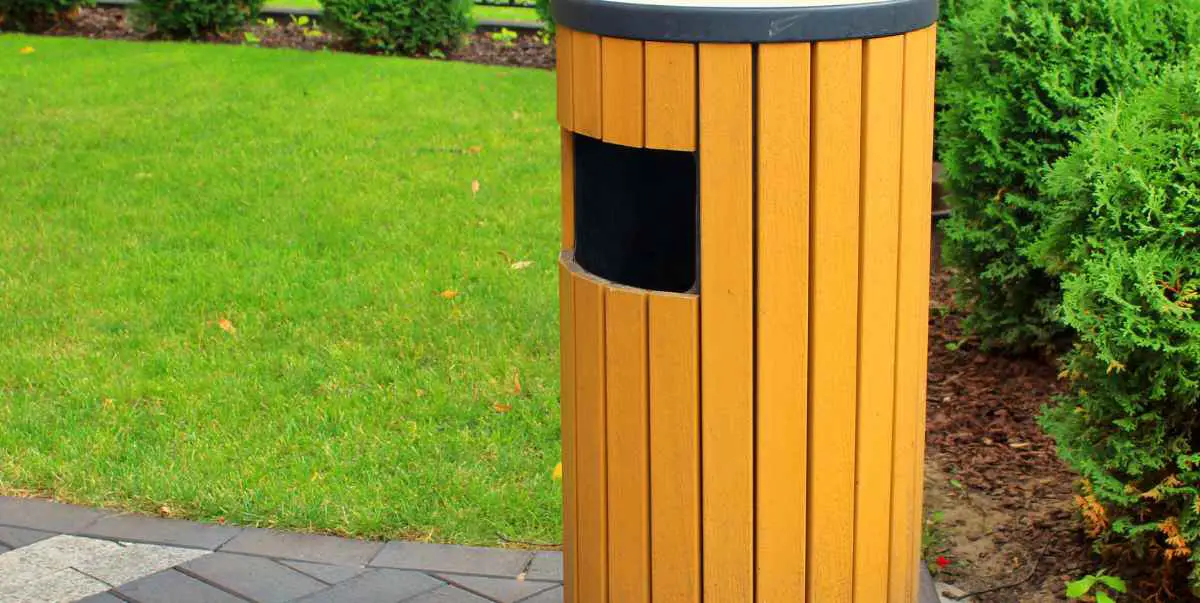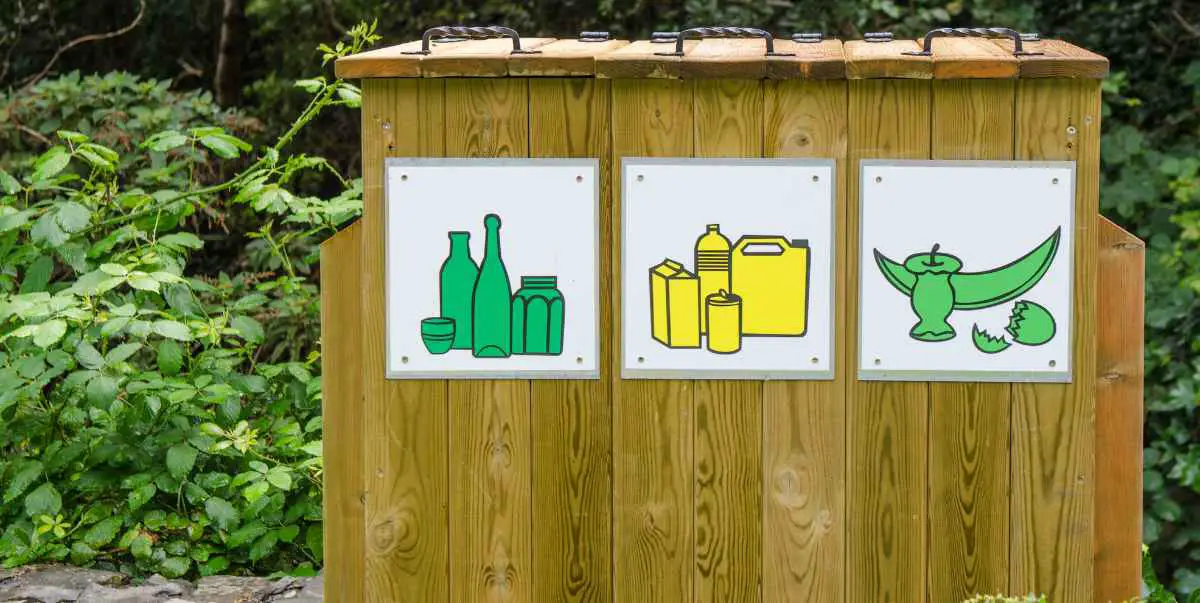No, you cannot put wood in the recycle bin. Wood is not accepted in regular recycling programs.
If you’re wondering whether it’s acceptable to dispose of wood in the recycle bin, the answer is no. Although recycling bins are designed to collect various materials for processing and reuse, wood is not one of them. The recycling process for materials like paper and cardboard is different from that of wood products, which makes it unsuitable for inclusion in regular recycling programs.
Instead, you should consider alternative methods for disposing of wood, such as donating it for reuse or taking it to a local landfill or wood recycling facility. By properly managing the disposal of wood, we can promote sustainable waste management practices and reduce environmental impact.
1. Understanding Recycling
Recycling is an important aspect of waste management that helps in preserving natural resources and reducing environmental pollution. Through recycling, materials such as plastic, paper, glass, and metal can be reprocessed and used to create new products, reducing the need for raw materials and minimizing waste sent to landfills.
1.1 What Is Recycling?
Recycling is the process of collecting, sorting, and processing waste materials to turn them into new products. It involves breaking down the waste material into its basic components, which can then be used to manufacture new items. Recycling helps in conserving resources, reducing energy consumption, and preventing the release of harmful greenhouse gases into the atmosphere.
1.2 Why Is Recycling Important?
Recycling plays a crucial role in protecting our environment and promoting sustainability. Here are some key reasons why recycling is important:
- Conservation of natural resources: Recycling reduces the need for extracting and processing new raw materials, conserving precious natural resources such as timber, water, and minerals.
- Energy savings: Recycling requires less energy compared to manufacturing products from virgin materials. By recycling materials like aluminum and paper, significant energy savings can be achieved.
- Waste reduction: Recycling helps divert waste from landfills, reducing the amount of waste accumulating in our environment and minimizing pollution.
- Reduction in greenhouse gas emissions: Manufacturing products from recycled materials generates fewer greenhouse gas emissions compared to using virgin materials. This helps combat climate change and reduce air pollution.

2. What Can Be Recycled?
Wood cannot be put in the recycle bin as it cannot be easily broken down and processed into new materials. However, some facilities may accept untreated wood for special recycling programs.
Placing the right materials in your recycle bin is crucial to ensure they can be processed and transformed into new products. Not everything can be recycled, so it’s important to know what materials are accepted and what shouldn’t be placed in the recycling bins. Let’s take a closer look at this:
2.1 Accepted Materials In Recycling Bins
Paper and Cardboard: This includes newspapers, magazines, office paper, cardboard boxes, and cereal boxes.
– Glass Containers: Clear, brown, and green glass bottles can be recycled.
– Metal Cans: Aluminum, steel, and tin cans used for food and beverages.
– Plastic Containers: Look for the recycling symbol with a number, typically found on the bottom of the container. Accepted plastics include bottles, jugs, and containers labeled with numbers 1 through 7. Remember to rinse them before recycling.
– Cartons: Milk, juice, soup, and broth cartons made of paperboard with a plastic lining.
– Household Batteries: Rechargeable batteries and single-use batteries should be recycled separately. They contain valuable metals and harmful chemicals that can be recovered or properly disposed of.
2.2 Materials That Should Not Be Placed In Recycling Bins
There are materials that should not be placed in recycling bins, as they can contaminate the recycling process or damage the equipment. Here are some examples:
– Plastic Bags: These should not be placed in recycling bins as they can get tangled in the sorting machinery. Instead, reuse them or take them to designated drop-off locations at grocery stores.
– Styrofoam: This material is not accepted in recycling bins. Consider reusing it or check if there are any specialized recycling facilities in your area.
– Food Waste: Organic waste such as leftover food, fruit peels, or coffee grounds should be composted instead of being placed in recycling bins.
– Electronics: Items like computers, cell phones, and televisions should not be placed in recycling bins. Look for e-waste recycling programs or drop-off locations in your area.
– Light Bulbs: Fluorescent bulbs, incandescent bulbs, and LED bulbs should not be placed in recycling bins. They often contain hazardous materials and need special recycling methods.
By understanding what can and cannot be recycled, you can make a positive impact on the environment. Always follow the guidelines provided by your local recycling program or waste management services to ensure proper recycling practices.
3. Can Wood Be Recycled?
Wood is a versatile material that can often be found in our daily lives. From furniture to construction materials, it serves numerous purposes. But what happens when it reaches the end of its lifecycle? Can wood be recycled? Let’s explore this question and discover how we can contribute to a sustainable future.
3.1 Types Of Wood That Can Be Recycled
Not all types of wood can be easily recycled, but many can find new life through proper recycling processes. The key is to identify the types of wood that can be recycled, and here are some common ones:
| Type of Wood | Recyclable |
|---|---|
| Softwood (e.g., pine, cedar) | Yes |
| Hardwood (e.g., oak, maple) | Yes |
| Engineered wood (e.g., plywood, particleboard) | Yes, if free from contaminants |
| Treated wood (e.g., pressure-treated, painted) | Possible, but requires specialized recycling facilities |
3.2 How To Properly Recycle Wood
To ensure wood can be recycled efficiently, it’s essential to follow proper recycling practices. Here are some steps to consider when recycling wood:
- Remove any non-wood materials like screws or nails.
- Sort wood by type to facilitate the recycling process.
- If the wood is treated, check with local recycling facilities for specific instructions.
- Support local recycling programs or find dedicated wood recycling centers in your area.
3.3 Alternatives To Recycling Wood
While recycling wood is an environmentally friendly option, there are alternatives worth exploring:
- Reuse: Consider repurposing wood for crafts or other DIY projects.
- Donation: If the wood is still in good condition, consider donating it to community organizations or schools.
- Composting: If the wood is untreated and can be broken down, it can be a valuable addition to compost piles.
- Energy recovery: Wood that cannot be recycled or repurposed can be converted into energy through biomass facilities.
Remember, every effort counts when it comes to creating a sustainable future. By understanding which types of wood can be recycled, following proper recycling practices, and exploring alternative options, we can ensure a more eco-friendly approach to wood waste management.
4. The Eco-friendly Way To Dispose Of Wood
Properly disposing of wood waste is not only important for minimizing environmental impact but also contributes to achieving a more sustainable future. In this section, we explore three eco-friendly methods of wood disposal: wood reuse and repurposing, composting wood, and using wood as biomass fuel.
4.1 Wood Reuse And Repurposing
Instead of sending wood to the landfill, consider reusing or repurposing it. The versatility of wood allows for numerous creative possibilities. By breathing new life into old wood, you can keep it out of landfills and reduce the demand for new timber.
Wood reuse involves salvaging wood from demolished structures or old furniture, then refurbishing or repurposing it for new applications. For instance, old wooden pallets can be transformed into unique furniture pieces or garden planters. Reclaimed wooden boards can be used to create rustic accent walls or flooring, adding character to any space. These practices not only extend the lifespan of wood but also help conserve natural resources.
4.2 Composting Wood
If the wood is untreated, non-pressure treated, or free from any chemicals, you can compost it. Wood scraps, sawdust, and small branches can be broken down and transformed into nutrient-rich compost. This compost can then be used to enrich soil in gardens, landscaping, or for agricultural purposes.
To compost wood, it is important to ensure proper carbon-to-nitrogen ratio, also known as the browns-to-greens ratio. Add wood waste in small pieces to your compost pile or bin, mixing it with greens such as grass clippings and kitchen scraps. Regularly turn the compost to maintain airflow and accelerate decomposition. In time, you will have dark, crumbly compost that helps improve soil structure and fertility.
4.3 Using Wood As Biomass Fuel
Wood can also be utilized as a renewable energy source. Instead of letting it go to waste, consider using it as biomass fuel. Biomass refers to organic materials that can be burned or converted into energy. For example, wood chips, sawdust, and logs can be used in biomass power plants or wood-burning stoves to generate heat or electricity.
By using wood as biomass fuel, you are reducing reliance on fossil fuels, which emit greenhouse gases that contribute to climate change. Additionally, this process helps divert wood waste from landfills while providing a sustainable alternative energy source.
In conclusion, properly disposing of wood waste plays a vital role in protecting the environment and preserving natural resources. By reusing and repurposing wood, composting it, or using it as biomass fuel, we can contribute to a more sustainable and eco-friendly future.

5. Tips For Responsible Recycling
Recycling is a vital part of our efforts to protect the environment and reduce waste. When it comes to wood, responsible recycling practices are essential to ensure it doesn’t end up in landfills. Here are five tips to guide you in responsibly recycling wood.
5.1 Educate Yourself On Local Recycling Guidelines
Before you toss any wood into the recycling bin, it’s crucial to educate yourself on your local recycling guidelines. Different municipalities and waste management facilities have varying rules and regulations regarding what can be recycled and how it should be prepared. By understanding these guidelines, you can ensure that you are contributing to a successful recycling process.
5.2 Prepare Wood Properly For Recycling
Properly preparing wood for recycling is just as important as knowing the guidelines. If you fail to prepare wood properly, it may not be accepted or may cause issues during the recycling process. To ensure a smooth recycling experience, consider the following preparation tips:
- Remove any metal, nails, or screws from the wood.
- Cut the wood into smaller pieces, if possible, to facilitate recycling.
- Avoid staining or painting the wood, as certain dyes and chemicals can contaminate the recycling process.
- Keep the wood dry and free from excessive dirt or debris.
5.3 Reduce Wood Waste Through Conscious Consumption
The best way to minimize wood waste is by practicing conscious consumption. By being mindful of your wood usage, you can reduce the amount of wood that needs to be recycled or disposed of altogether. Here are a few suggestions to help you achieve this:
- Consider alternatives to wood, such as bamboo or recycled materials.
- Opt for products made from sustainably sourced wood.
- Reuse or repurpose wood whenever possible instead of discarding it.
- Donate excess wood to community organizations or individuals who may have a use for it.
By taking these steps and incorporating responsible recycling practices into your routine, you can do your part in conserving resources and protecting the environment. Remember, every small action counts!
Conclusion
To wrap things up, it is important to remember that wood should not be put in the recycle bin. While recycling is a great way to reduce waste, wood requires different processing methods. Instead, consider repurposing or donating wood items to give them a new life.
By spreading awareness about proper wood disposal, we can all contribute to a more sustainable future.


